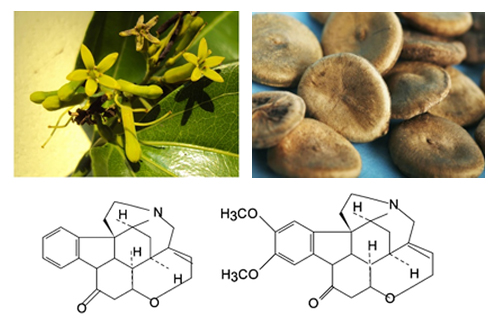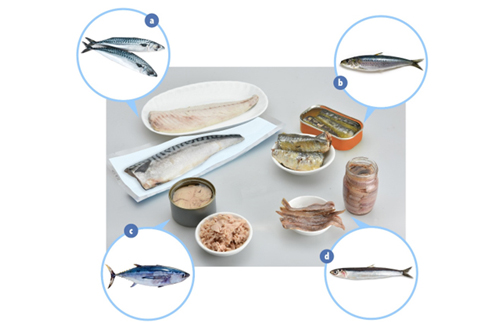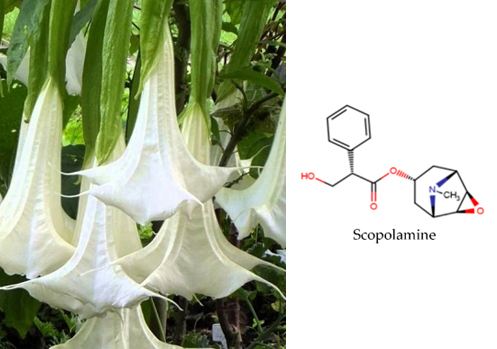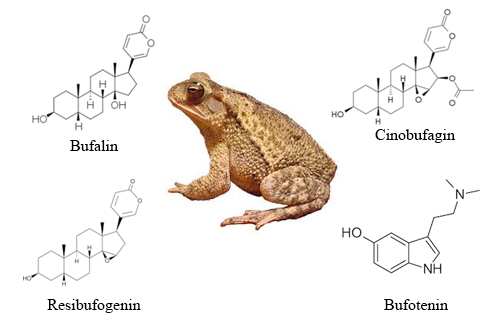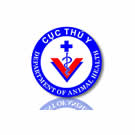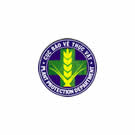- Folder Determine Cause of Poisoning
- Views 2582
- Last Updated 11/11/2023
Foods with natural toxins are foods that are inherently toxic. Natural toxins cause various health effects and pose a serious threat to human and livestock health, including immune, reproductive, or neurological system disorders and underlying causes of cancer.
Natural toxins are compounds derived from living organisms. These substances are not harmful to the organisms themselves but can be toxic to other organisms, including humans when ingested. These structurally diverse compounds also differ in biological function and toxicity. Some toxins are produced by plants as a natural defense mechanism against predators, insects, or microorganisms, or as a result of microbial infestation, such as molds, in response to extreme climatic conditions. Some other natural sources of toxins are microalgae and plankton in the ocean or sometimes in lakes, which produce non-toxic toxins to fish or shellfish that feed on toxic-producing organisms, but humans can be poisoned when using these for food.
1. Natural toxins of animal origin
1.1. Tetrodotoxin (TTX)
In Vietnam, although the authorities and the media have propagated a lot to the people, tetrodotoxin poisoning (TTX) still occurs in many places in poisoning cases, along the provinces from North to South, with high mortality (up to 60%). TTX is not destroyed by heat, cooked, or dried, is quickly absorbed from the gastrointestinal tract within 5-15 minutes, peak concentration is reached after 20 minutes, TTX is very neurotoxic, inhibits sodium channels, especially in skeletal muscle, prevents potential generation and impulse conduction, the main result is muscle paralysis and respiratory failure, which is easy to die.
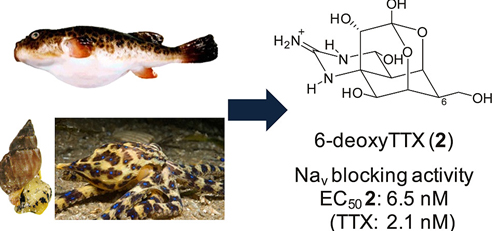
Figure 1. Some animals contain TTX
TTX toxin was isolated from some bacteria such as Epiphytic bacterium, Vibrio sp., and Pseudomonas sp.. This substance was detected in many marine animals such as puffer fish, blue-ringed octopus, a toxin number of snails, crabs, starfish, slugs, scorpions, salamanders, ...
According to the Vietnamese Food Administration, puffer fish toxin is strongly toxic, with 4 mg of poisonous fish meat can kill a rabbit 1 kg, humans only need to eat 10 g of poisonous puffer fish meat to be poisoned. Tetrodotoxin has a lethal dose of about 1–2 mg and the minimum dose required to cause symptoms is estimated to be 0.2 mg. After eating seafood containing tetrodotoxin for about 10 to 45 minutes, patients may experience sensory disturbances such as numbness of lips, tongue, face, limbs, headache, abdominal pain, nausea, increased salivation,... More severe cases of poisoning have signs such as paralysis of motor muscles, cardiovascular collapse, magnetic dilation, apnea, respiratory failure, coma and can lead to death.
1.2. Toad toxin
Toads can be poisonous throughout their life cycle, from eggs to tadpoles to small toads and adult ones. Toad venom glands are located all over the skin and parotid glands. When threatened, toads can increase pressure in the gland and spray venom several meters away. Toad toxins are complex, and vary by species but are mainly divided into two groups: amines (adrenaline, noradrenaline, bufotenin, dihidrobufotenin, bufotionin) and steroid derivatives (cholesterol, ergosterol, g-sistosterol, bufotoxin, bufadienolides, argentinogenin, bufalin, bafarenogin, bufotalin, bufotalinin...). In which, bufodienolide and bufotoxin have the same mechanism of action as cardiac glycosides. Bufotenin, dihidrobufotenin, bufotionin cause hallucinations. Indolealkylamine has hallucinogenic, uterine contractions, and intestinal spasms.
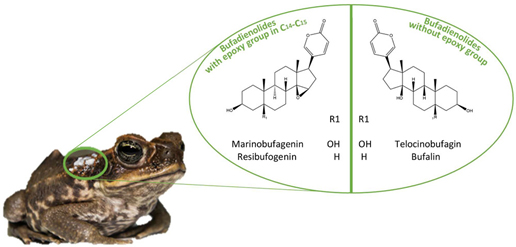
Figure 2. Bufadienolide toxins and derivatives in the parotid glands of toads
Systemic poisoning occurs when eating toad meat, liver, and eggs; holding toads when their skin is damaged or putting toads in mouths, and using erectile dysfunction drugs with ingredients extracted from toad venom.
In Vietnam, there are many poisoning cases due to eating toad meat containing toxins, mainly due to the preliminary processing of toxins from toad plastic (contained in toad skin), toad eggs, toad liver can be attached to toad meat. The report dated 07/04/2023 of the food safety and hygiene department of Gia Lai province describes a case where a mother, after catching a toad, brought it back as meat for 3 animals to eat. After eating, 3 children showed signs of poisoning and were hospitalized, of which 1 child was determined to have died before reaching the hospital
1.3.Fish bile toxins
In some areas, people have the habit of using fish bile to treat diseases because they think that fish bile has the effect of improving health and curing a number of chronic diseases such as bronchial asthma, back pain, and colitis. In fact, the bile of carp and drifting fish can cause poisoning. People often swallow the gallbladder whole or mix it with water or alcohol. The bigger the fish, the more likely it is to cause poisoning. Fish drift of 0.5 kg when drinking bile can cause acute kidney failure. The bile of carp weighing 3 kg or more definitely causes poisoning and can be fatal if not treated promptly.
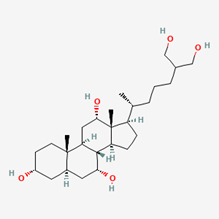
Figure 3. 5α-cyprinol
In fact, it is common to see carp bile poisoning in clinical practice. The main toxin in fish bile is a steroid alcohol called 5α-cyprinol, which damages mainly the liver and kidneys. According to the report dated 10/7/2022 of the food safety and hygiene department of Bac Can province about 8 people suffering from carp bile poisoning. The cause was determined to be the use of black carp bile mixed with alcohol soaked in bear bile to drink. After hospitalization, patients have reflux and coma because when poisoned with this form, the poison will cause acute renal failure, and hemolysis.
2. Natural toxins of plant origin
2.1. Marine biotoxins
Most of these toxins are produced by natural marine algae (phytoplankton). They accumulate in fish/bivalve mollusks when they eat algae or eat other individuals that have eaten algae. There are five recognized fish poisoning syndromes: paralytic poisoning (PSP), neurotoxic poisoning (NSP), diarrheal poisoning (DSP), dementia poisoning (ASP) from bivalve mollusks and ciguatera fish poisoning (CFP).

Figure 4. . (A) Certain fish species may contain marine biotoxins: Barracuda, snapper, sturgeon, sturgeon,
goby, amberfish, grouper, scad, fingernail(B) Ciguatoxin causes CFP poisoning
These toxins are heat stable, not reduced or lost during processing, and currently, there is no specific treatment for poisoning caused by marine biotoxins.
According to information dated 11/5/2016 from the Food Safety Department of Quang Tri province, ciguatera poisoning is the most common form of marine biological poisoning caused by ingestion of fish living in coral reefs containing natural toxins. Large fish are poisoned by eating small fish ingested toxic algae in this area, and toxins accumulate in the liver, intestines, head, and acorns. Symptoms encountered with ciguatera poisoning include: itching of fingers, toes, mouth, tongue, lips, broken neck, joint and muscle pain, nausea, vomiting, abdominal pain, diarrhea, headache, fainting, and severe intoxication can cause shortness of breath. In addition, poisoning by shellfish is the most severe cause of nervous paralysis. This toxin is present in mollusks, and crustaceans growing in an environment containing toxic algae. Symptoms of poisoning occur quickly, only half an hour after eating, with manifestations such as numbness, itchy lips, dizziness, nausea, abdominal pain, bowel movements, and incoherent speech, if severe can cause memory loss, confusion even death due to toxins that have affected the nervous system.
2.2. Alkaloids
Plants synthesize alkaloids to maintain their ability to survive under adverse conditions. Despite significant benefits to humans and the pharmaceutical industry, some plant alkaloids can be toxic to humans. Human exposure to these alkaloids through inhalation, ingestion, or direct contact leads to specific mechanisms involving receptors, transporters, enzymes, and genetic material in cells and exposed tissues, thereby possibly causing hepatotoxic effects and skeletal muscle deformities. A toxic effect can be listed as pruritus, gastrointestinal disturbances (nausea, vomiting, diarrhea), mental disturbances (dizziness, confusion, paranoia), circulatory disturbances (arrhythmia, increase/decrease in blood pressure), movement disorders (muscle fatigue, muscle numbness, paralysis of limbs, reduced motor function), effects on reproductive function, teratogenicity, and death.
Toxic alkaloids include some main groups as follows:
- Alkaloids from Gelsemium elegans: koumine, gelsemine, ...
- Alkaloids from Strychnos nuxvomica: brucine, strychnine, ...
- Alkaloids from Aconitum fortunei: aconitine, ...
- Tropane alkaloid from Solanaceae sp.: atropine, scopolamine, ...
- Pyrrolizidine alkaloids: senecionine, echimidine, intermidine, jacobine, ...
Glycoalkaloids: α-solanin, α-choconin, α-tomatin, ...

Figure 5. (A) Gelsemium elegan; (B) Solanaceae sp.; (C) Strychnos nux-vomica
Alkaloids are diverse and common in the group of natural plant toxins because most plants tend to grow to protect themselves from adverse environmental agents like animals. Especially for plants growing in forests, the ability to synthesize alkaloids is stronger, so most alkaloid poisoning cases often occur due to eating plants picked from the forest. In the last two years, there have been four cases of food poisoning due to atropine and scopolamine, and three cases due to gelsamine and koumine recorded by the National Institute of Food Control.
2.3. Furocoumarins
These toxins are present in many plants such as parsley, celery root, citrus (lemon, lemon, grapefruit), and some medicinal plants. Furocoumarins are toxins released by these species in response to environmental influences, such as physical damage to the plant. Furocoumarins are phototoxic substances that cause skin damage when exposed to sunlight (UVA exposure). If ingested, furocoumarins can cause liver damage and death.
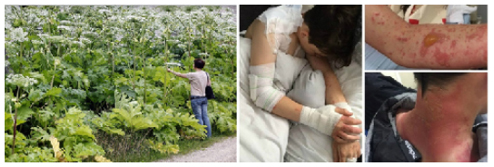
Figure 6. Skin irritation when in direct contact with furocoumarin in high concentrations
Furocoumarin toxin is most concentrated in the bark, surface layer of the plant, or around the damaged area. Therefore, to avoid poisoning by furocoumarin, it is recommended to peel before cooking and remove damaged parts. Toxin levels drop when food is cooked.
2.4. Cyanogenic glycosides
Cyanogenic glycosides are phytotoxins that occur in about 2000 species, some of which are used as food in some areas of the world. Cassava, fresh bamboo shoots, peach seeds, apricots, plums, bitter almonds, etc. are typical foods containing cyanogenic glycosides.
Cyanogenic glycoside itself is not toxic to humans, when ingested, it will be hydrolyzed by β-gluconidase enzymes by intestinal bacteria into glucose, aldehydes, and toxic cyanide radicals. Cyanide is an extremely toxic chemical, quickly absorbed into the body, very quickly and strongly inhibiting cellular respiration (cytochrome oxidase). Symptoms of poisoning appear quickly, loudly, and severely. Rapid death is often due to respiratory failure, convulsions, and inhibition of cellular respiration. Saving the patient's life requires prompt, aggressive treatment, especially respiratory support, and an antidote

Figure 7. Some plants contain cyanogenic glycosides
In Vietnam, cyanogenic glycoside poisoning is mainly caused by improperly processed eating of cyanamiva and bamboo shoots, leading to the absorption of cyanogenic glycosides into the body and conversion into toxic cyanide. For cassava, it is recommended to peel, cut off 2 ends and soak in water. When heating, it is necessary to open the zone to allow hydrogen cyanide gas to evaporate. Dried cassava or silage also allows for the removal of most toxins, but it is not recommended to eat too much cassava when hungry. For bamboo shoots, similar to cassava, preliminarily prepared by soaking thoroughly with a large amount of water for several times and boiling several times, opening the swing when boiling. Silage bamboo shoots should not eat bamboo shoots and drink too much water soaked in bamboo shoots. In June 2023, the National Institute for Food Control recorded a case of cyanogenic glycoside poisoning caused by drinking too much sour bamboo shoot juice (about 200 mL).
3. Natural toxins of fungal origin
3.1. Poisonous mushrooms
Natural mushrooms can contain a variety of different toxins. The symptoms are usually the onset from 4 to 24 hours after eating, from vomiting, diarrhea, confusion, visual disorders, salivation, the illusion of toxic nerves, and death. The way food processing with temperatures is not to do inactivation toxins. Therefore, should avoid using any kind of natural mushroom/mushroom forest unless exactly identified is not toxic.

Figure 8. Pictures of some poisonous and non-toxic mushrooms
In the period from 2022-2023, the National Institute for Food Control has received samples in four cases of food poisoning and found the results of detecting fungal toxins. Including two cases of psilocin poisoning due to eating forest mushrooms and cordyceps; one detection of psilocin and muscarin in mushroom samples collected from the patient's home; one case of eating forest mushrooms, through testing to simultaneously detect psilocin and five types of toxins in death hat mushrooms: α-amanitin, β-amanitin, γ-amanitin, phalloidin, phallacidin. The common point of patients in the above mushroom poisoning cases is abdominal pain, dizziness, vomiting a lot, trembling limbs, and sweating. Fortunately, the patients were treated in time so there were no deaths.
3.2. Mycotoxins
Mycotoxins are the natural toxins produced by some kind of mildew. Mildew can create toxins developed in various foods like cereal, dried fruit, nuts, and spices. The development of mildew can happen before harvest or after the harvest, in the process of preserving or on the food often in terms of warm and wet.
Most of the mildew toxins are stable in terms of chemicals and exist in the process of food processing. The effects of mildew toxins transmitted to food can be acute with severe symptoms and even death quickly appeared after the consumption of highly contaminated food products. Long-term effects of exposure to chronic mildew toxins’ health include carcinogenic and immunodeficiency.
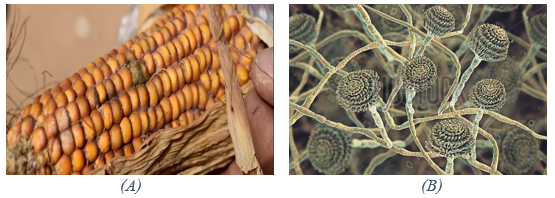
Figure 9. (A) Infested corn (B) Aflatoxin-producing Aspergillus flavus
In June 2022, the National Institute for Food Control recorded an incident of poisoning caused by eating corn drift cakes contaminated with the toxin aflatoxin B1. After eating for about twelve hours, the person has symptoms of dizziness, dizziness, abdominal pain, nausea, repeated bowel movements, fatigue, also liver and kidney damage. After being treated, the patients recovered to their normal state.
4. The prevention of the risk of food poisoning from natural toxins
To minimize the risk of food poisoning by natural toxins in the food, we should:
- Should not be given that if something is' natural' then it is automatically safe.
- Do not use food with bruising, damage or discoloration, and mold.
- Do not use food with unusual tastes.
- Only consumption of wildlife when it was determined certainly not toxic.
REFERENCES
- Hướng dẫn chẩn đoán và xử trí ngộ độc (2015), quyết định số 3610/QĐ-BYT ngày 31/8/2015.
- Hansen et al. (2021), Natural toxins: environmental contaminants calling for attention, Environmental Sciences Europe, 33, 112.
- World Health Organization (2023), Natural toxins in food, https://www.who.int/news-room/fact-sheets/detail/natural-toxins-in-food.





